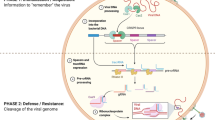Abstract
MicroRNAs (miRNAs) are a class of small non-coding RNAs that function in transcriptional and post-transcriptional regulation of gene expression. An increasing number of schistosome miRNAs have been identified and are expected possibly involved in differentiation, development, and metabolism. However, limited information is available concerning the target genes of schistosome miRNAs. In the present study, the key target genes of bantam, an abundant miRNA found in paired female Schistosoma japonicum, were predicted by bioinformatics analysis and Solexa technology. Luciferase reporter assay and bantam mimic assay were applied in combination to further verify the targets of bantam. Results showed that ATP synthase (CAX76793.1), one of the three selected predicted targets, was confirmed as the target of bantam; bantam mimic assay results also showed that the two other predicted targets, namely, ataxia telangiectasia mutated (ATM)-related (XP_002571630.1), and ribosomal protein L30 (CAX72575.1), were not confirmed as targets. This research proposed the design and significance of reasonable biological experiments that could be performed to identify miRNA target genes in schistosomes.



Similar content being viewed by others
References
Bartel DP (2004) MicroRNAs: genomics, biogenesis, mechanism, and function. Cell 116:281–297
Bartel DP (2009) MicroRNAs: target recognition and regulatory functions. Cell 136:215–233
Benetti R, Gonzalo S, Jaco I, Munoz P, Gonzalez S, Schoeftner S, Murchison E, Andl T, Chen T, Klatt P, Li E, Serrano M, Millar S, Hannon G, Blasco MA (2008) A mammalian microRNA cluster controls DNA methylation and telomere recombination via Rbl2-dependent regulation of DNA methyltransferases. Nat Struct Mol Biol 15:998
Bushati N, Cohen SM (2007) MicroRNA functions. Annu Rev Cell Dev Biol 23:175–205
Chen K, Rajewsky N (2007) The evolution of gene regulation by transcription factors and microRNAs. Nat Rev Genet 8:93–103
Cheng G, Jin Y (2012) MicroRNAs: potentially important regulators for schistosome development and therapeutic targets against schistosomiasis. Parasitology 139:669–679
Chi X, Yang Q, Chen X, Wang J, Pan L, Chen M, Yang Z, He Y, Liang X, Yu S (2011) Identification and characterization of microRNAs from peanut (Arachis hypogaea L.) by high-throughput sequencing. PLoS One 6:e27530
Cioli D (2000) Praziquantel: is there real resistance and are there alternatives? Curr Opin Infect Dis 13:659–663
Copeland CS, Marz M, Rose D, Hertel J, Brindley PJ, Santana CB, Kehr S, Attolini CS, Stadler PF (2009) Homology-based annotation of non-coding RNAs in the genomes of Schistosoma mansoni and Schistosoma japonicum. BMC Genomics 10:464
Filipowicz W, Bhattacharyya SN, Sonenberg N (2008) Mechanisms of post-transcriptional regulation by microRNAs: are the answers in sight? Nat Rev Genet 9:102–114
Hao L, Cai P, Jiang N, Wang H, Chen Q (2010) Identification and characterization of microRNAs and endogenous siRNAs in Schistosoma japonicum. BMC Genomics 11:55
He YX, Yang HZ (1980) Physiological studies on the post-cercarial development of Schistosoma japonicum. Acta Zool Sin 26:32–41
Huang J, Hao P, Chen H, Hu W, Yan Q, Liu F, Han ZG (2009) Genome-wide identification of Schistosoma japonicum microRNAs using a deep-sequencing approach. PLoS One 4:e8206
Kennell JA, MacDougald OA (2005) Wnt signaling inhibits adipogenesis through beta-catenin-dependent and -independent mechanisms. J Biol Chem 280:24004–24010
Kim VN (2005) MicroRNA biogenesis: coordinated cropping and dicing. Nat Rev 6:376–385
Lewis BP, Shih IH, Jones-Rhoades MW, Bartel DP, Burge CB (2003) Prediction of mammalian microRNA targets. Cell 115:787–798
Liu Q, Tuo W, Gao H, Zhu XQ (2010) MicroRNAs of parasites: current status and future perspectives. Parasitol Res 107:501–507
Livak KJ, Schmittgen TD (2001) Analysis of relative gene expression data using real-time quantitative PCR and the 2(−Delta Delta C(T)) Method. Methods 25:402–408
Marco A, Kozomara A, Hui JH, Emery AM, Rollinson D, Griffiths-Jones S, Ronshaugen M (2013) Sex-biased expression of microRNAs in Schistosoma mansoni. PLoS Negl Trop Dis 7:e2402
Peterson SM, Thompson JA, Ufkin ML, Sathyanarayana P, Liaw L, Congdon CB (2014) Common features of microRNA target prediction tools. Front Genet 5:23
Ritchie W, Rasko JE (2014) Refining microRNA target predictions: sorting the wheat from the chaff. Biochem Biophys Res Commun 445:780–4
Simões MC, Lee J, Djikeng A, Cerqueira GC, Zerlotini A, da Silva-Pereira RA, Dalby AR, LoVerde P, El-Sayed NM, Oliveira G (2011) Identification of Schistosoma mansoni microRNAs. BMC Genomics 12:47
Steinmann P, Keiser J, Bos R, Tanner M, Utzinger J (2006) Schistosomiasis and water resources development: systematic review, meta-analysis, and estimates of people at risk. Lancet Infect Dis 6:411–425
Sun J, Wang S, Li C, Ren Y, Wang J (2014a) Novel expression profiles of microRNAs suggest that specific miRNAs regulate gene expression for the sexual maturation of female Schistosoma japonicum after pairing. Parasite Vector 7:177
Sun J, Wang SW, Li C, Hu W, Ren YJ, Wang JQ (2014b) Transcriptome profilings of female Schistosoma japonicum reveal significant differential expression of genes after pairing. Parasitol Res 113:881–892
Wang Z, Xue X, Sun J, Luo R, Xu X, Jiang Y, Zhang Q, Pan W (2010) An "in-depth" description of the small non-coding RNA population of Schistosoma japonicum schistosomulum. PLoS Negl Trop Dis 4:e596
Xue X, Sun J, Zhang Q, Wang Z, Huang Y, Pan W (2008) Identification and characterization of novel microRNAs from Schistosoma japonicum. PLoS One 3:e4034
Zheng H, Fu R, Wang JT, Liu Q, Chen H, Jiang SW (2013) Advances in the Techniques for the Prediction of microRNA Targets. Int J Mol Sci 14:8179–87
Acknowledgments
We would like to thank Pan W. Q. for his valuable advice. We also appreciate the discussions and comments from Xiao S. H., Zhang Q. F., and Xu X. D. We thank Shenzhen Huada Gene Research Institute for Solexa analysis. This research was supported by the National Natural Science Foundation of China (Grant No. 81071383).
Author information
Authors and Affiliations
Corresponding author
Electronic supplementary material
Rights and permissions
About this article
Cite this article
Sun, J., Wang, SW. & Li, C. ATP synthase: an identified target gene of bantam in paired female Schistosoma japonicum . Parasitol Res 114, 593–600 (2015). https://doi.org/10.1007/s00436-014-4221-1
Received:
Accepted:
Published:
Issue Date:
DOI: https://doi.org/10.1007/s00436-014-4221-1




